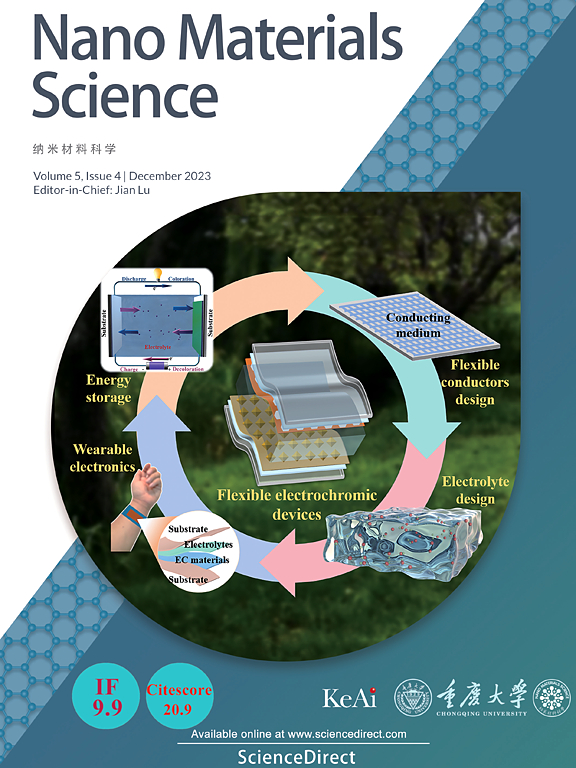Crystal orientation engineering toward high-performance photodetectors and their multifunctional optoelectronic applications
IF 17.9
2区 材料科学
Q1 Engineering
引用次数: 0
Abstract
Pulsed-laser deposition has been developed to prepare large-area In2S3 nanofilms and their photoelectric characteristics have been investigated. The In2S3 nanofilm grown under 500 °C is highly oriented along the (103) direction with exceptional crystallinity. The corresponding (103)-oriented In2S3 photodetectors exhibit broadband photoresponse from 370.6 nm to 1 064 nm. Under 635 nm illumination, the optimized responsivity, external quantum efficiency, and detectivity reach 19.8 A/W, 3 869%, and 2.59 × 1012 Jones, respectively. In addition, the device exhibits short rise/decay time of 3.9/3.0 ms. Of note, first-principles calculations have unveiled that the effective carrier mass along the (103) lattice plane is much smaller than those along the (100), (110) and (111) lattice planes, which thereby enables high-efficiency transport of photocarriers and thereby the excellent photosensitivity. Profited from the sizable bandgap, the In2S3 photodetectors also showcase strong robustness against elevated operating temperature. In the end, proof-of-concept imaging application beyond human vision and under high operating temperature as well as heart rate monitoring have been achieved by using the In2S3 device of the sensing component. This study introduces a novel crystal orientation engineering paradigm for the implementation of next-generation advanced optoelectronic systems.

面向高性能光电探测器的晶体取向工程及其多功能光电应用
采用脉冲激光沉积法制备大面积In2S3纳米膜,并对其光电特性进行了研究。在500°C下生长的In2S3纳米膜沿(103)方向高度取向,结晶度优异。相应的(103)取向In2S3光电探测器在370.6 ~ 1064 nm范围内表现出宽带光响应。在635 nm光照下,优化后的响应度、外量子效率和探测率分别达到19.8 A/W、3 869%和2.59 × 1012 Jones。此外,该器件的上升/衰减时间短,为3.9/3.0 ms。值得注意的是,第一性原理计算揭示了沿(103)晶格平面的有效载流子质量比沿(100)、(110)和(111)晶格平面的有效载流子质量要小得多,从而实现了光载流子的高效传输,从而具有优异的光敏性。受益于相当大的带隙,In2S3光电探测器也显示出对高工作温度的强大稳健性。最后,通过使用传感元件的In2S3器件,实现了超越人类视觉和高工作温度下的概念验证成像应用以及心率监测。本研究为下一代先进光电系统的实现引入了一种新的晶体取向工程范式。
本文章由计算机程序翻译,如有差异,请以英文原文为准。
求助全文
约1分钟内获得全文
求助全文
来源期刊

Nano Materials Science
Engineering-Mechanics of Materials
CiteScore
20.90
自引率
3.00%
发文量
294
审稿时长
9 weeks
期刊介绍:
Nano Materials Science (NMS) is an international and interdisciplinary, open access, scholarly journal. NMS publishes peer-reviewed original articles and reviews on nanoscale material science and nanometer devices, with topics encompassing preparation and processing; high-throughput characterization; material performance evaluation and application of material characteristics such as the microstructure and properties of one-dimensional, two-dimensional, and three-dimensional nanostructured and nanofunctional materials; design, preparation, and processing techniques; and performance evaluation technology and nanometer device applications.
 求助内容:
求助内容: 应助结果提醒方式:
应助结果提醒方式:


